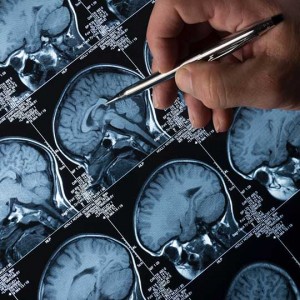New Study Tracks Parkinson’s Disease Within the Brain

Researchers led by Alain Dagher and collaborators at McGill University recently published a study entitled “Network Structure of Brain Atrophy in de novo Parkinson’s Disease” in the journal eLife where they reveal new insights into Parkinson’s disease (PD) progression.
PD is the second most common neurodegenerative malignancy after Alzheimer’s disease and affects approximately 1% of the population worldwide over the age of 65. Most clinical symptoms are due to loss of dopaminergic neurons in a brain region called the substantia nigra. There is no cure for PD and current treatments control or minimize symptoms including tremors, slowness of movement, stiffness or rigidity, and loss of balance. Studies performed in post-mortem samples suggest that PD spreads from other brain areas along specific neuronal pathways from the brainstem to subcortical areas. These affected brain areas may explain non-motor symptoms observed at early stages in PD patients such as alterations in olfactory sensation and sleep. So far, magnetic resonance imaging (MRI) studies have failed to consistently demonstrate regional brain atrophy in the earlier stages of the disease.
The research team had access to a large sample of newly diagnosed PD patients and age-matched control individuals through the open source Parkinson’s Progression Markers Initiative (PPMI) database. By analyzing MRI scans of patients at early stages of PD and comparing them to healthy individuals, they identified affected brain regions in the early stages of PD.
“Past studies have failed to consistently demonstrate regional brain atrophy in earlier stages of the disease due to samples of subjects that were too small and to methods that were less sensitive in detecting all aspects of the disease’s impact on the brain. We now have the means to map the disease with greater sensitivity than previously possible,” says Alain Dagher, senior author of the study.
The pattern of disease progression confirms the hypothesis that PD, similar to Bovine Spongiform Encephalopathy, has a prion-like mode of disease propagation. Toxic misfolded alpha-synuclein initially accumulates in neurons of the brain stem and then spreads from cell to cell using the brain’s neuronal highways to propagate into other areas. “The atrophy pattern on MRI is compatible with a disease process that spreads via brain networks – something that had never been shown in human patients before, and would support the hypothesis that PD is caused by a “toxic agent” that spreads trans-neuronally,” explained Dagher.
The study will continue in these patients providing researchers with further information about disease progression throughout the brain. In the longer term, it might eventually lead to treatments that act at earlier stages preventing the progression of PD.





